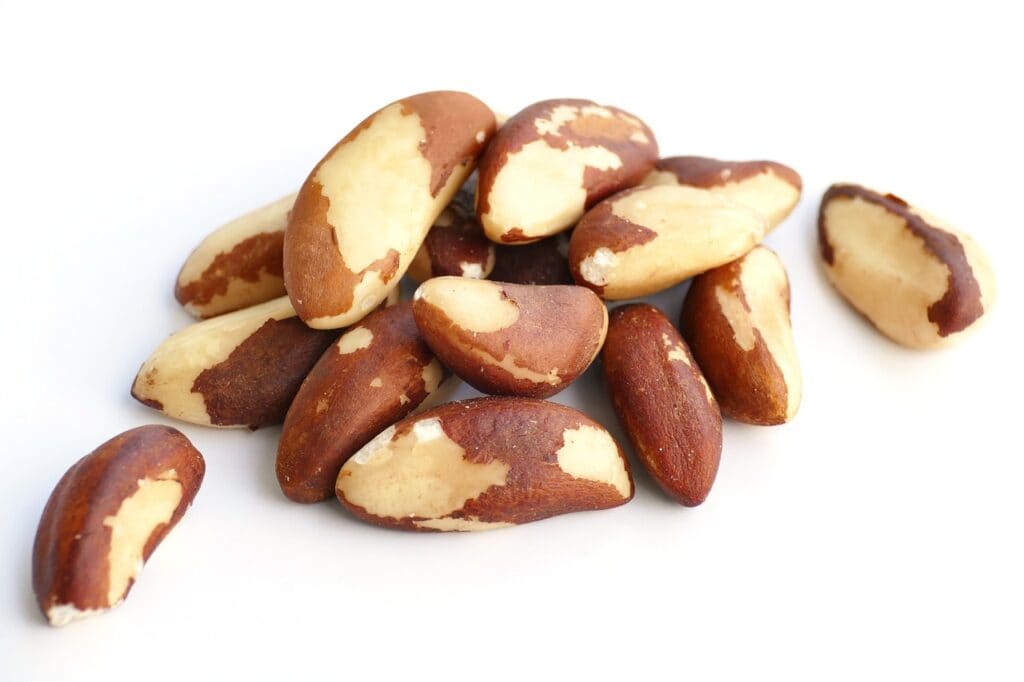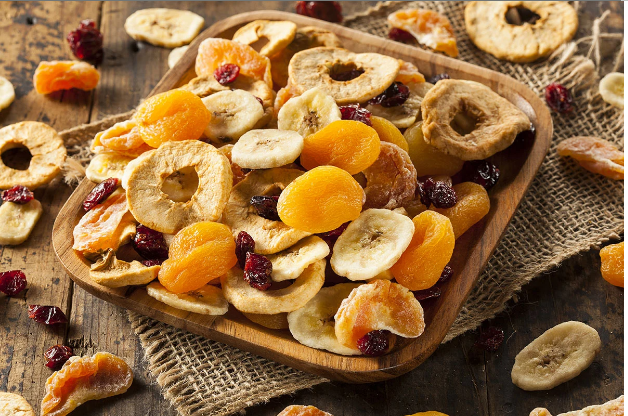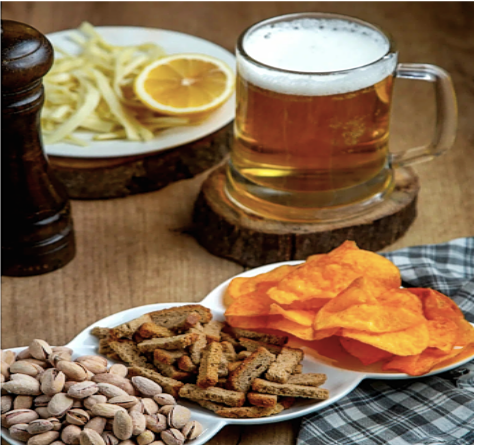Your cart is currently empty!
The Food Value Of Nuts And Seeds In A Variety Of Ancient Cultures
The Role of Nuts and Seeds in Prehistoric Diets

The food value of nuts and seeds is clear. Nuts and seeds constituted two of the most important sources of nutrition for Paleolithic Man. Scientists, such as archaeologists who excavate ancient ruins for clues as to what people ate long ago, have discovered that nuts and seeds predominated in the diets of prehistoric societies.
Janet Ann Stock, a graduate in anthropology from Texas A & M University in College Station, Texas, participated in several explorations of the Hinds Cave in Val Verde County, in the southwest part of Texas, back in the late 1970s and early ’80s. She compiled her fieldwork into a published report entitled The Prehistoric Diet of Hinds Cave, Val Verde, Co., Texas.
People inhabiting the Hinds Cave tens of thousands of years ago subsisted on vegetative foods of high-protein yield. These included sunflower seeds and walnuts, both rich in amino acids and strength-giving once ingested into the body. Many would eat the seeds in different wild fruits, such as Texas persimmons, fox grapes, currants, hackberries, and crab apples. This is different from spitting out seeds as a habit of modern cultural practices today.
Modern Vs. Ancient Food Value Of Nuts And Seeds
Every year since 1968, Texas A & M held a premier lecture program for faculty and students entitled the University Lecture Series. Lectures that are deemed to be of exceptionally scholarly merit are published by the University. On November 28, 1979, Professor Vaughn gave the twelfth speech in this much-honored lecture series. Publishers recorded his speech and included it in several books later on.
Vaughn observed that as long as our early ancestors clung to this simplified eating program, they enjoyed remarkably good health. But once they added more meat and additional fats to their diet, in the forms of milk, pork, cheese, and eggs, and began domesticating crops and refining and cooking foods then, they soon became subject to obesity and a whole host of other diseases.
In speaking about our very ancient ancestors, who lived millions of years ago, it is noted that their meals were not like ours at all. Today, our lifestyle dictates that we eat most of our food at three specific times of the day, yet this is contrary to the true needs of our bodies. We are designed to be snackers who never eat much at any one time but instead nibble on food throughout the day. Two of the central ingredients in prehistoric snacking were nuts and seeds. In the dimming light of early evening, they huddled together and munched on whatever leftover seeds, nuts, and dried pieces of meat they had carried back to camp at the end of each day.
Further Comparison
But this is nothing like our modern concept of an evening meal. With its variety of main courses and desserts. Food was the main focal point of their lives. They cared very much about what they ate and, through a system of trial and error, learned which plant foods were good to eat and which were poisonous. In other words, they were more careful in choosing good foods than in modern times.
Meat was a luxury since most of it came from small animals they could easily catch or from carrion left behind by large carnivores. Their food was nutritious, high in tough fiber, and provided all their dietary needs. They ate food raw with no loss in vitamins since they did not understand how to use fire. With a whole diet of nuts, seeds, berries, tubers, leaves, and small gamel accompanied by lots of daily walking, these people were lean and fit. Obesity was probably unknown, and the remains of their skeletons suggest malnutrition was not a problem.
Energy Utilization From Nuts And Seeds

The amount of carbohydrates, fat, and protein in a food determines its energy value. Man and beast alike are dependent on food as a source of energy to do bodywork and maintain body temperature. Humans will digest the food to form an important compound known as adenosine triphosphate (ATP). Cells can expend and create ATP themselves, making it an “energy currency.” The cells use ATP to synthesize nutrients and proteins, contract muscles, conduct nerve impulses, and other functions.
The protein and fat contained in many nuts and a few seeds provide some of the greatest physiological fuel value to the body. When many foods are consumed and go through the usual assimilation process, there are generally varying losses of energy due to the waste production of feces and urine and further losses due to defects inherent in the digestive system. But the actual amount of energy lost from consumed nuts and seeds through these various factors is considerably less than for most other foods eaten.
Medicinal Benefits of Some Amino Acids
In 1958, scientists in the former Soviet Union discovered that walnuts, pine nuts, pistachios, almonds, and peanuts were extremely rich in arginine. Experiments conducted in animals have shown that diets enriched with just 18 percent arginine produced significant reductions in serum cholesterol. Arginine inhibits fat absorption; hence, the higher the arginine in the diet, the lower the cholesterol level. Now, meats contain more of another amino acid, lysine, which can be harmful to the heart because it promotes atherosclerosis. However, the inclusion of arginine-rich nuts and seeds in the diet frequently helps to prevent coronary heart disease.
Two other amino acids are especially useful to the brain. These are tryptophan and tyrosine. They affect neurotransmitters or chemicals within the brain, which, in turn, produce mood changes. Tryptophan stimulates serotonin, the neurotransmitter that causes a sense of relaxation. Conversely, for sharpening brain concentration, tyrosine is needed; it triggers the neurotransmitters norepinephrine and dopamine, which may be described as “alertness chemicals” in that they assist the brain in thinking and react more quickly.
Almonds, chestnuts, peanuts, pecans, and walnuts have more tryptophan for relaxing the body. So, if you want to unwind after a hard day at work or play, snack on any of these. On the other hand, if you’re driving long distances at night or taking a test, both of which require enhanced mental alertness, then you’ll want to munch on either Brazil nuts, cashews, hazelnuts, macadamias, pine nuts, and pistachios. All of these show the high food value of nuts and seeds.
Nuts Enhance Brain Power

Many agree that nuts are a brain-boosting food due to their nutrient content of vitamins, minerals, fats, and antioxidants. While there isn’t a single food that can dramatically enhance your brain power, including nuts in your diet can contribute to overall brain health and cognitive function. Here’s how nuts can be beneficial for your brain:
- Omega-3 fatty acids: Some nuts, such as walnuts and flaxseeds, are rich in omega-3 fatty acids. Omega-3s are known to support brain health and may help improve cognitive function.
- Antioxidants: Nuts are a good source of antioxidants, including vitamin E and polyphenols. These compounds help protect your brain cells from oxidative stress and inflammation.
- Healthy fats: Nuts contain monounsaturated and polyunsaturated fats, which can support overall cardiovascular health. A healthy heart ensures good blood flow to the brain, which is essential for optimal brain function.
- Vitamins and minerals: Nuts provide essential vitamins and minerals like magnesium, vitamin B6, and folate, which play a role in brain function and the synthesis of neurotransmitters.
- Protein and amino acids: Nuts contain proteins that are the building blocks for neurotransmitters, the chemical messengers in the brain.
Trace Elements for the Body
Scientists know that the human body currently requires 18 different minerals for good health and growth. Scientists have also found calcium, phosphorus, sodium, chlorine, potassium, magnesium, and sulfur in the system in appreciable amounts (0.05 percent or more) and call these macrominerals. Lastly, scientists have found iron, iodine, manganese, copper, zinc, cobalt, and fluorine in very small amounts or traces in the human body. People call these trace elements or microminerals.
There are indications that several other trace elements, particularly selenium, strontium, boron, molybdenum and chromium, may also be vital in the nutrition of the average human being. Nuts contain appreciable or even significant amounts of the first four; only in chromium do they seem rather deficient.
More Nutrients In The Food Value Of Nuts And Seeds

Selenium is a potent antioxidant. It helps protect the immune system from damage caused by scavenger molecules called free radicals. Selenium is also vital for proper pancreas function and keeping muscle tissue elastic. Where selenium reserves are low, there you will find cancer and heart disease, according to the British Journal of Nutrition. Seven types of nuts contain varying amounts of selenium. Brazil nuts lead the pack. In fact, they are far higher in selenium content than previously thought, averaging 22 micrograms per kilogram of nut meat. Next in line for fairly high amounts were peanuts, cashews, and walnuts; those with minimal amounts included hazelnuts, sweet chestnuts, and almonds. Scientists are now beginning to look at another Trace element called strontium.
Because it’s too soon to tell all how strontium might be potentially useful in the body, only a few functions can be stated based on current scientific evidence. For one thing, strontium is vital to producing immune system macrophages, which move about the body like garbage collectors, consuming foreign debris and harmful bacteria that could injure the system in various ways. Strontium is also a key component in intracellular functions; it’s presence in the body keeps cells from mutating due to environmental (chemical or social (stress) considerations. Strontium also assists in bonding minerals to form strong bones. Without adequate amounts of it, bones become weaker over the course of time. The same thing applies to tooth formation as well.
Further Information On Nutrients
Boron is essential for calcium uptake and healthy bones and teeth, just as strontium is. A recent study conducted by the U.S. Department of Agriculture showed that within a week’s time of boron supplementation (3 milligrams daily), a test group of postmenopausal women lost 40 percent less calcium, 331 percent less magnesium, and about 29 percent less phosphorus through their urine.
Molybdenum assists the body in better-utilizing nitrogen. This trace element helps in the last stages of conversion of purines to uric acid following meat consumption. It stimulates normal cell activity and is part of the enzyme system of xanthine oxidase. Molybdenum concentrates primarily in the liver, bones, and kidneys. Low intakes have been frequently associated with male sexual impotence, higher incidents of cancer, and frequent mouth and gum diseases. These are just a few representations of the food value of nuts and seeds.
Seeds Are Sensational for Healthy Teeth

Many things might be said in favor of seeds for snack foods. They help develop a good complexion and strong bones on account of several wonderful minerals in which they are rich. They also help to prevent sagging jowls and fatty accumulation around the throat, resulting in the “double-chin” effect seen on many obese people. When the jaws are constantly exercised by frequent seed or nut chewing, excess deposits of fat stored in the muscle tissue of the face, neck, and throat is gradually “burned up” through increased chemical combustion.
But there is another benefit to seed consumption that not too many people are aware of. They help keep the teeth free of cavities and plaque and the gums free of inflammatory infections like gingivits. When sunflower seeds, for instance, are routinely chewed, they help to remove other food particles that may have become stuck in between the teeth from previous meals. They also reduce the acidity level of saliva in the mouth due to sugar consumption.
Both measures help to prevent cavities. Gingivitis is a progressive, painful infection marked by craterlike lesions covered with slough; foul breath, increased salivation, and frequent bleeding from the gums are additional features. Chewing seeds often helps to “massage” gum areas so lesions can heal and remove the dirty film covering them. Believe it or not, seeds and nuts, to some extent, are nature’s forms of inexpensive and nutritious dental care.
Nuts And Seeds Promote Longevity
Flavius Josephus (A.D. 37-A.D. 100) was a prominent Jewish historian and soldier, born in Jerusalem. Josephus’ historical works are among the most valuable sources for the study of early Judaism and early Christianity. Having studied the tenets of the three main sects of Judaism-Essenes, Sadducees, and Pharisees-he became a Pharisee himself. Josephus became the commander of Galilee at the beginning of the war between the Romans and the Jews. Despite the fact that he had opposed the uprising. He surrendered to the Romans instead of committing suicide at the end. Josephus won the favor of the Roman general Titus Flavius Vespasianus and took his name, Flavius.
He lived in Rome under imperial patronage. He wrote the renowned Greek-language historical works. His most famous work, of course, is the Antiquities of The Jews, which has appeared in different English editions.
Josephus attributed it to three basic factors. The first reason was that “those ancients were beloved of God.” The second reason was “because their food was then fitter for the prolongation of life.” And finally, “God afforded them a longer time of life on account of their virtue.”
Various analyses of nuts and seeds nutrient contents show that they are rich in certain trace elements, which are, in fact, the very key to keeping the body alive and in a reasonably good state of health for a very long time. Throughout history, the food value of nuts and seeds has been clear.
Blog Assisted By rzwilliams.com







